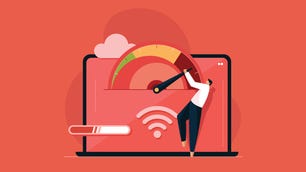If you graduated college this past spring, your student loan grace period will soon be coming to an end. That means you’ll have to start paying back your student loans, along with any interest they’ve accrued.
“It’s a tricky time for borrowers entering repayment,” said Elaine Rubin, a student loan policy expert and director of corporate communications for Edvisors. “There have been several years of uncommon repayment rules, and now we are returning the new normal. The new normal includes plans on hold due to legal challenges, and the phasing out of certain income-driven repayment plans like PAYE and ICR.”
With so much confusion swirling around student loans and repayment plans, you probably have a lot of questions. Here’s what you need to know as you prepare to repay your student loans.
Read more: Student Loan Forgiveness on Hold Again. Experts Explain What’s Next for Debt Relief
🔍 Track down your loans
You generally don’t have to pay back your student loans while you’re enrolled in school or for six months after you leave. This means you may not recall how many loans you took out or know who your loan servicer is.
You should get started by tracking down your student loans. You can find all of your federal student loans by signing into your Federal Student Aid account with your FSA ID. If you don’t remember, you can look up your account or retrieve your FSA ID at studentaid.gov.
Once you’re logged in, you’ll see a list of the loans you borrowed, which may include Direct subsidized and unsubsidized loans. You’ll also see who your loan servicers are, which are the companies that handle repayment.
What you won’t see are any private student loans you borrowed from a bank or online private lender. It won’t be listed in your Federal Student Aid account, though. The best way to find any private student loans is by reviewing your paperwork or checking your credit report for open private loan accounts, said Betsy Mayotte, the president and founder of the Institute of Student Loan Advisors.
Mayotte added that you might have received a list of your loans as part of your exit counseling, which you generally complete during your last semester of college.
Read more: You Can Now Get a Free Credit Report Every Week. Here’s How
💻 Create an online account with each loan servicer
Once you’ve tracked down your student loans, you’ll have to create an online account with your loan servicers. You can make payments through your account, as well as update your contact information with your current email, phone number and mailing address.
If you have a plan in place for repayment, consider opting into automatic payments. Autopay allows your servicer to withdraw payments directly from your bank account on the due date, so you can “set it and forget it” without missing any payments.
Plus, you’ll typically score a 0.25 percentage point discount on your interest rate by signing up for autopay.
💰 Review your repayment options
If you borrowed federal student loans, you have a variety of repayment plans at your fingertips. The default is the standard plan, which involves fixed payments over 10 years. If you don’t choose an alternative, your loans will automatically be placed on the standard plan.
It’s worth looking into alternate plans, especially if you can’t afford your monthly payments on the standard plan. These include:
Income-driven repayment plans
Income-driven plans adjust your monthly payments to a percentage of your discretionary income. They also extend your repayment terms to 20 or 25 years and can end in loan forgiveness. The government recently reopened online applications for IDR plans, but loan servicers aren’t currently processing applications. You can still apply, but your loans may be placed in forbearance while you wait.
Extended repayment
Extended repayment spans 25 years, and your payments may be fixed or graduated.
Graduated repayment
This plan spans 10 years, but your payments will start smaller and increase every two years. It may appeal if you expect your salary to increase in the future, but it can result in higher interest charges than the standard plan.
Federal Student Aid’s Loan Simulator tool is a handy resource you can use to compare payments across various plans. It will show you your expected monthly payment and total interest charges, so you can select the best plan for your budget.
Private student loans are not eligible for these federal repayment options. If you’re having trouble affording payments, reach out to your loan servicer about your options. You could also explore refinancing student loans for new terms and a potentially lower interest rate.
Can I apply for the SAVE repayment plan?
Student loans have become a hot-button political issue in recent years, and several initiatives introduced by the Biden-Harris administration have been blocked in the courts. One such initiative is the SAVE repayment plan, a more generous income-driven repayment plan that replaced the REPAYE plan.
“The SAVE plan is currently blocked due to an injunction ordered by the 8th Circuit Court of Appeals,” explained student loan lawyer Adam Minsky.
Right now, borrowers enrolled in SAVE have been placed in an administrative forbearance which has paused payments and interest. This hold is expected to last for another six months or longer.
“It is possible to choose the SAVE Plan as a repayment plan option,” said Rubin. “During the ongoing legal challenges, anyone who joins the plan will be placed under administrative forbearance until all necessary court rulings are made.”
Rubin added that if SAVE survives in court, it offers the most affordable monthly payment plan for most borrowers.
🎓 Explore student loan forgiveness programs
Along with reviewing repayment plans, it’s also worth learning about federal student loan forgiveness opportunities. Some options include:
- Public Service Loan Forgiveness: This debt relief plan forgives loans after 10 years of public service and 120 qualifying payments on an income-driven repayment plan.
- Teacher Loan Forgiveness: Teachers may qualify for up to $17,500 in loan forgiveness after five consecutive years of teaching in a low-income school or educational agency.
- IDR plan forgiveness: IDR plans can forgive your student loan balance if you still owe money at the end of your term.
Some states offer student loan repayment assistance programs to professionals who work in high-need communities or shortage areas. Some companies also offer student loan benefits to their employees. If you’re job searching, you might look for an employer that will help you pay back your education debt.
Some student loan forgiveness options are on hold
The Biden-Harris administration introduced student loan forgiveness measures in recent years, but has been unable to move forward.
“The Biden administration was preparing to roll out a new broad loan forgiveness program designed to benefit several different categories of borrowers, but that program was challenged in court and is currently blocked,” said Minsky.
If you’re counting on loan forgiveness, experts suggest sticking with one of the already established programs rather than relying on mass student loan cancellation.
📉 Budget for your monthly payments
As your grace period comes to an end, you’ll have to work monthly student loan payments into your budget. Prepare for this by tracking your income and expenses, so you have a clear sense of where your money is going each month.
You could use a simple spreadsheet to track your cash flow or sign up for a budgeting app (CNET banking editor Kelly Ernst recommends Rocket Money) to automate the process.
If your payments are unaffordable, look into lowering your expenses if that’s possible. If not, consider a different repayment plan, such as an income-driven repayment plan, which caps your monthly payments to a percentage of your income. Experts warn against IDRs, however, if you can afford your payments on the standard plan and aren’t working toward forgiveness.
“While it can be tempting to just pick the lowest payment, keep in mind that unless you are pursuing a program such as Public Service Loan Forgiveness, the more you pay per month will result in paying less in the long run,” said Mayotte. “The sooner you pay the loans off, the less they will cost you.”
You can also consider making extra payments on your loans if you can afford it. Making extra payments will get you out of debt faster and could save you a lot in interest in the long run.
If you’re facing major financial challenges, you can postpone your payments by placing your loans in deferment or forbearance. Reducing or pausing payments could increase your borrowing costs in the long run, though. Depending on your federal loan type, interest may still accrue. You can also reach out to your servicer to see if you qualify for any other payment plans or assistance programs.
📧 Keep an eye on your email
With the landscape of student loans changing rapidly, it’s important to stay up-to-date on any changes that might impact your monthly payments or forgiveness options.
“Borrowers entering repayment for the first time should pay close attention to the communications from their servicer and the US Department of Education,” said Rubin.
Staying in the know will help you prepare if any new laws or court decisions affect your repayment plan or student loan program.
More student loan advice:
 synnbiob
synnbiob


